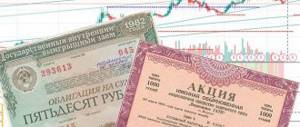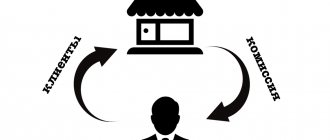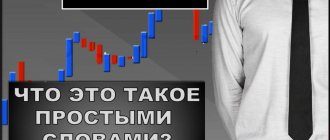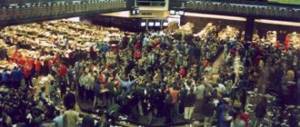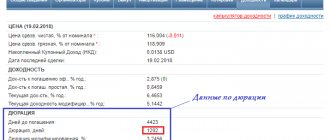People who have not dealt with enterprise reporting, when they first see such documents and the terms given in them, ask themselves the question - the mysterious capex and opex - what is it?
These designations in business reporting reflect the main types of costs of any enterprise - capital and operating. They are inextricably linked and understanding one without the other is impossible.
The essence of the concept of CAPEX
CAPEX (Capital Expenditure) is the cost of acquiring non-current assets, their reconstruction and modernization. Non-current assets are property used in the economic activities of an enterprise for a long period (more than 1 year). Non-current assets are divided into two categories:
- fixed assets (or fixed assets);
- intangible assets.
Fixed assets include buildings and equipment used in the production cycle. Over time, the cost of fixed assets is gradually transferred to the cost of the final product through depreciation.
Intangible assets (intangible assets) are objects that do not have a physical form, but represent a certain value for the enterprise. Intangible assets include the results of intellectual activity, trademarks, programs and databases, as well as the business reputation of the organization. Intangible assets are amortized if they have a useful life. Intangible assets with an indefinite service life are not subject to depreciation.
CAPEX or capital expenditures form the cost of an enterprise's non-current assets. Such expenses are irregular and are financed from the enterprise’s own capital through long-term borrowings and investments.
In economics, CAPEX businesses aim to make a profit as their value increases in order to expand production or turnover and attract investors.
Acquisition of fixed assets
The purchase by an enterprise of expensive objects (equipment, real estate, etc.) that will be included in the operating process usually does not cause difficulties: such expenses are capitalized. But in practice, it often happens that inexpensive objects, spare parts for equipment are purchased, and rented real estate is modernized. In each of these cases, difficulties may arise.
To understand this issue, you should note that according to international reporting standards (IFRS), the purchase of fixed assets is considered capital expenditures.
Consequently, in all of the above methods, when capitalization of expenses is needed, it is necessary to comply with the conditions for recognizing fixed assets. To do this, you will need to meet 4 criteria, the first of which determines fixed assets, and the last two are mandatory conditions for recognition:
- Objects that are used in operational activities. These are: production of products, provision of services, supply of goods, rental, management, etc.
- The objects are expected to be used for a long time, many times longer than the duration of the reporting period.
- Using the facilities increases the likelihood that the enterprise will receive economic benefits in the future.
- The cost of objects can be estimated.
If all criteria are met, the costs are capitalized. For example, all small office furniture or spare parts and tools are taken into account as a single fixed asset, when the price of one item is small, but the cost of purchasing a batch can be significant for the enterprise.
The essence of the concept of OPEX
OPEX (Operation Expenditure) are operating expenses, the costs of an enterprise associated with current activities. In other words, OPEX is regular expenses aimed at ensuring the smooth operation of the enterprise. These should include rent of premises, staff salaries, utility bills, delivery costs, communications, etc.
OPEX financing is carried out through working capital, i.e. from money received to the current account or cash desk of the enterprise as revenue.
OPEX influence the company's financial results in the opposite way: an increase in such costs leads to a decrease in profits. Optimizing operating expenses is an important part of financial and tax planning.
In the production sector, OPEX is called general production and general business expenses, in trade - distribution costs.
Nuances for investing in CAPEX
A novice entrepreneur should learn to understand when it is possible to invest company resources in the development of an enterprise, and when it is best to refrain from doing so. For example, if, due to investments in CAPEX, you will later be unable to pay off some of your monthly expenses, then it is best to refrain from such actions. It is also recommended to consider the following factors:
- current parameters of the enterprise - in some cases, development may be inappropriate, since it will not be implemented in full (for example, there are not enough employees on staff who could work on new equipment);
- specific parameters of the current asset - an existing asset does not always allow you to begin developing an existing enterprise, so development is suspended until new resources are found (for example, the area of the premises does not allow the purchase of equipment, as a result of which you will have to wait for the opening of a new store or plant) ;
- monetary value - the amount of finance that can be used to promote a business without damaging an existing enterprise.
If you take into account all the above indicators, then investing in the development of the company will bring huge profits. Therefore, learn to evaluate your capabilities and the time when CAPEX will be most profitable.
Balance of OPEX and CAPEX
What are CAPEX and OPEX in simple words? These are two groups of expenses, the ratio between which is regulated depending on the type of activity and the timing of the project. In capital-intensive industries (oil and gas, metallurgical, energy industries) and long-term projects, CAPEX is always present. Detailed analysis of CAPEX and OPEX should be given great attention. As for small businesses and short-term projects, it is preferable to focus on OPEX.
Let's consider how the cost structure should be regulated in various sectors of the economy.
At the enterprise
For example, we are talking about choosing between buying or renting industrial premises. It is clear that not every company can afford to purchase a building without borrowing funds. How the loan will be repaid and the return on invested capital will depend on the operation of the enterprise. For small volumes, it would be preferable to rent premises. If the enterprise is large, is interested in attracting investors, and the annual turnover is able to cover the cost of the facility, it may make sense to purchase the premises as a property.
Thus, for a newly created company or an enterprise with low turnover, OPEX will prevail. As production volumes or business turnover increase, CAPEX should be increased, i.e. gradually abandon the rental of premises and equipment, acquiring assets into ownership. In addition to reducing regular costs, this will make the company more independent from third parties. As you know, rent increases regularly; equipment maintenance costs will also not decrease over time. In addition, the property can always be sold at market price.
In the IT field
In the field of information technology, CAPEX is the acquisition of modern equipment. In addition, the equipment requires maintenance and periodic modernization, which increases its cost.
Options for managing enterprise profits through cost distribution
Depending on the priorities in a given period of a company’s life, either a reduction in investment costs or, conversely, an increase in capitalization may seem beneficial.
For example, for shareholders expecting dividend payments, which are calculated from net income after taxes, it is preferable to reduce the amount of taxes due to operating expenses.
At the same time, if the company's shareholders are more concerned about the valuation of the company (and it is usually measured by earnings before taxes and depreciation), the optimal option would be to increase capital expenditures in the reporting period.
The cost ratio also plays a role in determining the company's performance.
One of the most important indicators that every company strives to improve is the share of operating costs in total revenue. The instability of the indicator and its high value (especially regularly, over several periods) should raise questions from owners and creditors to the top management of the company and the organization of the work (production process).
Naturally, it is impossible to arbitrarily set opexes and capexes from the total amount of costs. But an experienced manager knows quite well some techniques for optimizing their ratio. An example of this would be the use of outsourcing services where one would have to purchase the appropriate equipment.
So, if the company requires the deployment of business applications on the appropriate server platform, the issue can be resolved in two ways:
- Purchase servers with installation on your own premises.
- Obtain the necessary server capacity by renting from companies providing cloud services.
If you give preference to the second option over the first, capital costs are transferred to OPEX, the company gets rid of the acquisition of non-core assets and reduces the absolute amount of tax payments. However, despite all the attractiveness of this option, it is not always the best in a particular situation.
Features of OPEX and CAPEX
So, what is the difference between operating expenses and capital expenses?
- Amount of expenses. Capital expenditure payments typically amount to significant amounts compared to OPEX.
- Regularity of payments. Operating expenses are made every month, capital expenses can be once a year or once every few years.
- Reflection in reporting. Capital costs are gradually transferred to the value of assets and are reflected in the “Capital and reserves” section of the balance sheet. In International Financial Reporting Standards (IFRS) documentation, information on CAPEX can be found in the “Investing Activities” section. Actual CAPEX costs (cash spent on the acquisition and modernization of fixed assets) are contained in the Cash Flow Statement. Operating expenses reduce the profit of the period in which they are incurred. OPEX are reflected in the appendix to the balance sheet “Profit and Loss Statement”; in reporting under IFRS, OPEX is included in payments for core activities.
- Sources of financing. Capital expenditures are financed from equity, targeted loans or investments. Operating costs - from the amounts of revenue received or loans to replenish working capital.
What is capital expenditure?
We already know what capital expenditures of an enterprise are. Now let's talk about what the areas of capital expenditures are and consider the features of such expenses for the budget.
Expenses for expansion of production and increase in property value are financed from the following sources:
- equity;
- investments;
- borrowed funds.
So, CAPEX in finance includes the following items:
- investments in new or existing enterprises aimed at purchasing new or improving the condition of existing fixed assets;
- expenses for servicing loans for these purposes (including accrued interest and commissions);
- expenses for major repairs of fixed assets.
What is included in capital budget expenditures? The same expenses, only within the framework of budget financing. The property in this case is state property, and loans are allocated from the federal or regional budget.
Budgetary investments in the form of capital investments in state or municipal property are carried out within the framework of the provided budgetary allocations.
It should be especially noted that loans issued by commercial banks for the purchase or modernization of fixed assets are targeted. The use of an overdraft or credit line with the purpose of “replenishment of working capital” is not provided for such purposes.
Efficiency calculation
Calculation of CAPEX and OPEX efficiency may be needed for the following purposes:
- assessing the effectiveness and risks of an investment project;
- financial analysis of the enterprise for a certain period;
- financial planning in order to expand production volumes, etc.
Let's look at how to calculate the efficiency of capital and operating costs.
Calculation of capital expenditure efficiency (CAPEX)
- First of all, you need to calculate capital costs using the formula:
\[ K_{general}=T_{R&D}+C+T_{log.}+P_s+T_{other}+T_{NA},where \]
\( T_{R&D} \) – R&D costs;
\( C \) – the cost of the object;
\( T_{log.} \) – logistics costs (delivery, storage, etc.);
\( P_s \) – cost of production area;
\( T_{other} \) – other associated costs (installation, adjustment, etc.);
\( T_{NA} \) – the amount of unused depreciation.
- The second point is to calculate the CAPEX efficiency. For this purpose, the economic efficiency coefficient is applied:
\[ K_e=\frac{P}{K_{general}}, where \]
\( P \) – profit for the year.
The calculation of profit differs for economic sectors:
- for production the formula is as follows:
\[ P=R-T, where \]
\( P \) – market value of manufactured products;
\( T \) – cost;
- For trading the formula is used:
\[ P=Trad.nat.-I, where \]
\(Trad.nat. \) – trade margin on goods;
\( And \) – distribution costs.
Standard values of the economic efficiency coefficient for various industries are established by Order of the Ministry of Construction of the Russian Federation No. 209 dated September 14, 1992.
Operating Cost Effectiveness (OPEX) Calculation
- The net operating income (NOI) indicator is determined as follows:
\[ CHOD=VD-OR, where \]
\( VD \) – gross income;
\( OR \) – OPEX.
Gross income includes revenue excluding value added tax amounts. OPEX does not include the following amounts:
- accrued depreciation, because this indicator is involved in the calculation of capital costs;
- interest on loans.
- Operating expense ratio (OER) is calculated using the formula:
How CAPEX affects stock prices and dividends
When a company earns a net profit, it has three main ways to spend it:
- pay dividends - most private Russian companies pay a certain percentage of FCF depending on their debt load, and most state-owned companies pay 50% of net profit according to IFRS;
- put money aside in a jar - i.e. add them to fixed assets, increasing assets (before distribution, such profits are reflected as “retained earnings” and are reflected in capital);
- invest in capital costs - this will be CAPEX.
Thus, the size of CAPEX directly affects free cash flow/net profit, from which dividends are paid. Simply put, the higher the capex, the less free funds the company has from which to pay dividends.
The specifics of the Russian stock market are such that the size of dividends directly affects the stock price. If a company cuts its dividend, its shares fall. Consequently, an increase in capital expenditure while maintaining the same level of profit and reducing dividends leads to a decline in the stock price.
A textbook example is Gazprom of the 2012-2018 model. The high level of capital costs for the construction of new gas pipelines at low gas prices and relatively low loads of the main capacities did not allow the company's quotes to rise above the level of 120-130 rubles. Any increase in CAPEX was perceived negatively by investors, as it resulted in a reduction in dividends.
In 2021, Gazprom significantly reduced its investment program and paid out 50% of net profit under IFRS, setting a record for the absolute size of the dividend. You can see for yourself what kind of candle has formed.
Here's another interesting article: What is beta and how to take it into account in your investments
Now NCSP has launched a similar powerful investment program. The increased CAPEX level is envisaged until the end of 2029, so the port's dividend will come under pressure over the next decade.
Large capital expenditures will be required for telecoms to introduce new 5G towers, while a significant increase in profits from this innovation will not be felt. Consequently, telecoms' dividends will also come under pressure in the coming years.
Naturally, isolated high CAPEX values do not exert significant pressure on dividends and quotes. We are talking only about long-term investments.
On the other hand, there are companies that traditionally maintain a high level of CAPEX and OPEX for their development - these are growing companies such as Novatek, Mail.ru Group, Facebook or Amazon. They pay virtually no dividends (or maintain a minimum level of payments), reinvesting almost all profits received in development. Shares of such companies are called growth stocks.
As a rule, large established businesses that are limited in development have low levels of capex and generous dividends (for example, Coca-Cola, 3M, MTS or Cisco are so-called value stocks), and high levels of CAPEX and small dividends / no dividends - growth companies.
When choosing between these two types of companies, the investor thinks about what to get: dividends or an increase in the value of the company, which is reflected in the growth of quotes. Simply put: make a profit now (dividends) or put it off for the future (capex).
Company managers have the same choice. This is clearly manifested in the corporate conflict between the main shareholders of Norilsk Nickel - Oleg Deripaska and Vladimir Potanin. Potanin insists on cutting dividends and increasing capital expenditures in order to significantly modernize the company and achieve multiple growth in profits (and a reduction in the number of accidents). While Deripaska is interested in making a profit here and now in the form of dividends in order to cover the debts of his company En+ and its daughter Rusal.
Until 2023, there is an agreement between the shareholders, according to which dividends remain at the same level, so tensions between the owners will continue until this year, and Norilsk Nickel will not receive a significant amount of the necessary funds for modernization.
So a high CAPEX level is not always bad. It is definitely worth investing in modernization. It’s another matter if the capital costs are not justified. For example, if a company invests in assets with low profitability.
For example, a company’s profitability is 20%, but new investments are only 10% effective. Consequently, overall profitability also decreases—resulting in reduced profits and dividends to investors. Therefore, it is worth evaluating the return on investment (ROI). Ideally, it should be no less than return on assets (ROA).
Thus, capital expenditures (CAPEX, capex) are the company’s costs for long-term investments: the purchase of fixed assets that will last more than 1 year. The size of capital expenditures should correlate with the size of the depreciation fund and, in the long term, increase profits. If a company's capital expenditures are not justified or ineffective, this will lead to a fall in the stock price. CAPEX also puts pressure on dividends, and this can also be regarded as a negative factor. But a low level of capital expenditure entails a decrease in production efficiency, so you need to monitor its normal level. Good luck, and may the money be with you!
Rate this article
[Total votes: 4 Average rating: 4.5]
Why calculate OPEX and CAPEX
As already noted, the redistribution of costs towards CAPEX indicates a strengthening of the financial position of the enterprise. Any company strives to reduce operating costs to a minimum. However, in the initial stages of a business or project, OPEX will prevail.
Calculation of CAPEX and OPEX costs is necessary for financial planning, analysis of enterprise performance, as well as for assessing the effectiveness of investments. Next, we'll talk about what an investor should pay attention to when analyzing costs.
The importance of ongoing contributions to the OS
According to an online review, CAPEX needs constant financing, otherwise the enterprise simply will not develop and, at best, will stand in one place, and at worst, it will begin to lose ground to competing companies. Therefore, the main asset must constantly function and be replenished. To do this, you can attract outside investors or invest your own funds received from the sale of the company’s goods and services. Here is just a basic list of costs that CAPEX may include:
- design and survey work;
- technical re-equipment;
- equipment testing;
- modernization of equipment;
- repair of equipment.
Funds for performing all these actions must be allocated from the main asset and constantly supplemented, since the development of the company depends on this. The most competent and enterprising entrepreneurs understand when it is best to invest in the development of a particular function, when it is better to transfer money from OPEX to CAPEX, and how exactly the company should be managed so that there is always money left in its budget for development.
What does the CAPEX size mean for a private investor?
To calculate CAPEX, a private investor should use the “Cash Flow Statement” (CFS) form, section “Investment activities”, lines “Acquisition of fixed assets” and “Acquisition of intangible assets”. The amounts for these lines should be added up and compared with the values for the previous year. This will be the approximate value of capital expenditures for the year.
An increase in asset value is necessary for capital-intensive industries, because equipment constantly needs updating and modernization. At the same time, the increase in the value of fixed assets should not be less than the amount of accrued depreciation, which can be seen in IFRS 16 “Fixed Assets” and IFRS 38 “Intangible Assets”.
Thus, an investor needs to pay attention to the following indicators:
- CAPEX change;
- change in asset value;
- the ratio of the amounts of accrued depreciation and changes in the value of fixed assets and intangible assets;
- the relationship between the increase in asset value and the increase in net profit.
How do businesses calculate CAPEX?
The company's fixed assets (non-current assets - those same machines, factories and ships) are subject to wear and tear. There are two types of wear:
- physical – gradual destruction (wear and tear) of an asset, for example, the collapse of a building or the rusting of a machine;
- moral – obsolescence of the equipment used (for example, computers, software, the same machines become obsolete).
The more wear and tear, the less efficient production becomes. Therefore, companies include depreciation in their cost estimates. There are two ways to account for depreciation:
- Linear - the accountant takes the value of the property, calculates how long it will take for it to completely crumble into dust, and calculates the depreciation of the property in equal parts for each year of service. For example, a certain tractor should last 15 years, it costs 1.5 million rubles, which means that every year its cost is depreciated by 100 thousand rubles. Most often, this method is used for physical wear and tear.
- Non-linear - the accountant writes off the depreciation cost in the first or last year of equipment service. This is convenient in case of obsolescence: once a year, old computers are simply written off and new ones are purchased instead.
And here’s another interesting article: Is it always worth buying undervalued shares, or How not to buy outright garbage
Thus, every year a certain part of the funds goes to the depreciation fund. With linear accounting for depreciation, funds for replacing equipment are accumulated gradually (for example, funds for a new tractor will accumulate in just 15 years, if you set aside 100 thousand rubles every year - yes, I know that there is inflation, and in reality it is taken into account, but we We simplify everything to understand the work scheme).
This sinking fund makes up the bulk of the capex. Simply put, the company puts aside part of the funds in a sink (sinking fund), then adds a little (or a lot) of money there and renews / buys assets - this is CAPEX.
What does the OPEX size mean for a private investor?
We know that the management of any company is interested in reducing operating costs in order to reduce income tax amounts. But reliable information about the amount of net operating income is important for a potential investor. This requires an analysis of management reporting data in the context of all operating costs.
The investor is interested in OPEX amounts from the point of view of analyzing operating income and its impact on net profit. A decrease in the OPEX ratio with a simultaneous increase in net profit indicates positive business development dynamics.
Thus, an investor needs the following sources to analyze OPEX:
- management reporting data;
- annex to the balance sheet “Profit and Loss Statement”, which reflects net profit.
Formulas for calculating the investment efficiency ratio
Using the efficiency ratio, you can find out how much profit was received from each invested ruble (specifically for each asset). The investment efficiency ratio is calculated as the ratio of annual profit and the number of capital investments for this period. However, for different types of activities this formula can be modified:
| Kind of activity | Calculation formula |
| Manufacturing industry | (Price of products produced during the year - Its cost) / Amount of capital investments for this period |
| Trade | (Volume of trade markups - Cost of turnover) / Number of capital investments for this period |
| Foreign studies | Annual profit / (Number of capital investments for this period + Depreciation) |
In addition to the efficiency ratio, it is necessary to calculate the payback period of the investment. To calculate it, a derivative formula is used: the amount of capital investments for a certain period must be divided by the annual profit.
Examples
Let us give practical examples of calculating CAPEX and OPEX.
CAPEX
The management of the company, which is an Internet provider, decided to expand its coverage area. For this purpose, additional equipment was purchased. The cost amounts were:
- cost of equipment (C) – 53,625,000 rubles. ($715,000 or UAH 20,735,000);
- logistics costs (Tlog.) – RUB 1,350,000. ($18,000 or 522,000 UAH);
- other expenses (installation, commissioning, advertising expenses, etc.) (Tother) – RUB 2,625,000. ($35,000 or UAH 1,015,000);
- cost of services provided per year (P) – RUB 322,500,000. ($4,300,000 or UAH 124,700,000);
- cost (rent of premises and leasing of equipment, wages of employees, etc.) (T) – 262,500,000 rubles. ($3,500,000 or 101,500,000 UAH).
- Let's calculate CAPEX:
\( K_{general} \)=715000+18000+35000=57,600,000 rub. ($768,000 or UAH 22,272,000).
- Let's calculate the economic efficiency ratio:
\[ K_e=\frac{4300000-3500000}{768000}=1.04. \]
In accordance with the standards established by the Ministry of Construction of the Russian Federation, the economic efficiency coefficient for the communications industry is 0.15. The value we obtained exceeds the standard by almost 7 times. This means that CAPEX is economically justified, will not cause losses to the enterprise and will help increase revenue.
It must be remembered that the order establishing regulatory coefficients was issued quite a long time ago - in 1992. In addition, the values stated in this document are assumed to be industry minimum values.
OPEX
Let's calculate OPEX for an enterprise providing cargo transportation services for the past calendar year based on the data:
- office rent – RUB 1,275,000. ($17,000 or 493,000 UAH);
- parking lot rental – RUB 637,500. ($8,500 or 246,500 UAH);
- purchase of spare parts – 450,000 rubles. ($6,000 or 174,000 UAH);
- employees' wages – 6,450,000 rubles. ($86,000 or UAH 2,494,000);
- Bank services – RUB 37,500. ($500 or 14,500 UAH);
- communication services – RUB 412,500. ($5,500 or 159,500 UAH);
- other expenses (purchase of office supplies, third-party services for cleaning, washing, tire recycling, etc.) – RUB 525,000. ($7,000 or 203,000 UAH);
- gross income (GI) – 12,000,000 rubles. ($160,000 or 4,640,000 UAH).
- Let's calculate OPEX:
We cut costs
Reducing OPEX costs is a priority for any business, and warehousing is no exception. The shortest way to optimize operating costs is to reduce the time between the date of production and the date of consumption : the shorter the product is stored, the lower the warehouse costs. Cost optimization can occur in four directions:
- Reducing building maintenance and utility costs.
- Improving the technical infrastructure of the warehouse.
- Operational efficiency.
- Efficiency of the cargo control and identification system.
Let's look at each of them in more detail.
The costs of maintaining a building directly depend on its class. New warehouse complexes are being built using energy-saving technologies, which means utility costs will be reduced. Any repair of a building means an automatic increase in costs, therefore, the better the initial condition of the premises, the less you will have to spend on repairs. When inspecting a building, it is necessary to pay close attention to the condition of the engineering systems. In some cases, it is advisable to “upgrade” them: for example, by replacing light bulbs with energy-saving ones.
Technical infrastructure refers to the mechanization of production (conveyors, loaders, etc.). This significantly speeds up processes and labor costs. Operational efficiency is primarily a reduction in the number of operations: the more time spent on each of them, the more expensive the unit of goods. High-quality software will reduce this type of expense.
The goods control and identification system will significantly reduce the time spent searching for the required cargo. Its optimization can go in several directions at once - technical (bar codes and radio tags), planning (rational use of space and shelving), labor-intensive (ABC analysis, when the most popular goods are closest to the shipping zone), etc.
Optimization also includes partial outsourcing of warehouse maintenance functions - for example, cleaning, security and operation services.
Which is better – CAPEX or OPEX
So, we know that CAPEX, in simple words, is the cost of acquiring and modernizing fixed assets, and OPEX is the current expenses of the enterprise.
The question often arises: which expenses are more profitable? There is no clear answer. From the point of view of taxation of profits, OPEX is certainly more profitable, because they reduce the profit of the period in which these expenses arose. And from the point of view of attractiveness for investors, CAPEX will be a priority.
Sometimes controversial situations arise regarding the attribution of expenses to CAPEX or OPEX. In the above example about a transport company, I classified the purchase of spare parts for cars as an operating expense. But there are times when it becomes necessary to purchase quite expensive spare parts: for example, an engine or gearbox. Such spare parts are “vital” for the car and cannot be classified as consumables. Then these costs can be capitalized, i.e. increase the cost of a fixed asset by the amount of spare parts. Of course, this is done provided that the car belongs to the company by right of ownership.
Thus, if an enterprise belongs to capital-intensive sectors of the economy and plans to attract investors, the emphasis should be on CAPEX. If the organization is engaged in trade or services and is a small business, special attention should be paid to optimizing OPEX.
What indicators determine the amount of capital costs
To calculate CAPEX, a part of the financial plan is provided, where the required amount is allocated from the enterprise’s own capital or it is planned to attract borrowed funds. What does this amount consist of?
- The initial cost of fixed assets on the balance sheet.
- Amounts of depreciation expenses planned for the useful life.
- Amounts of unused depreciation for past periods. What it is? Sometimes fixed assets are not involved in the production process. Perhaps these assets were acquired in order to use them in the future, but for now they are idle and not used. This is called conservation of the object, about which a corresponding act is drawn up. There are also cases when a fixed asset is being restored (reconstruction or modernization). These periods are part of the production cycle, and depreciation is not legally charged during the conservation or restoration periods. But it also happens that the accountant simply forgot to calculate depreciation for a certain period. The amounts of such depreciation charges are also taken into account when planning capital expenditures.
- The cost of fixed assets that are planned to be purchased.
- Planned amount of depreciation for new facilities.
- Residual value of fixed assets as of the last reporting date.
- The amount of accumulated depreciation as of the last reporting date.
What else to read
I recommend you read several of my other articles on financial topics:
- Costs – what they are, what they are and how to reduce them.
- Income - in the article I also classify income according to its source.
- Financial assets and liabilities are a useful article even for “ordinary” people. It will help you understand what makes some men and women rich and others poor.
- Financial pyramid - I love this article because in it I “poured out my soul” and talked about how I myself invested twice in pyramids. With all the details, of course.
- Individual investment account - how it allows you to get up to 52,000 rubles of guaranteed profit through a tax refund and some other cool features.
I also highly recommend these three articles. They turned out to be quite controversial, but I believe that my arguments are correct. And if you take note of them, you can save your time and your money.
- Is it possible to make money from trading?
- Is it worth making money on stocks?
- Is it possible to make money on Forex?
Perhaps that's all.


